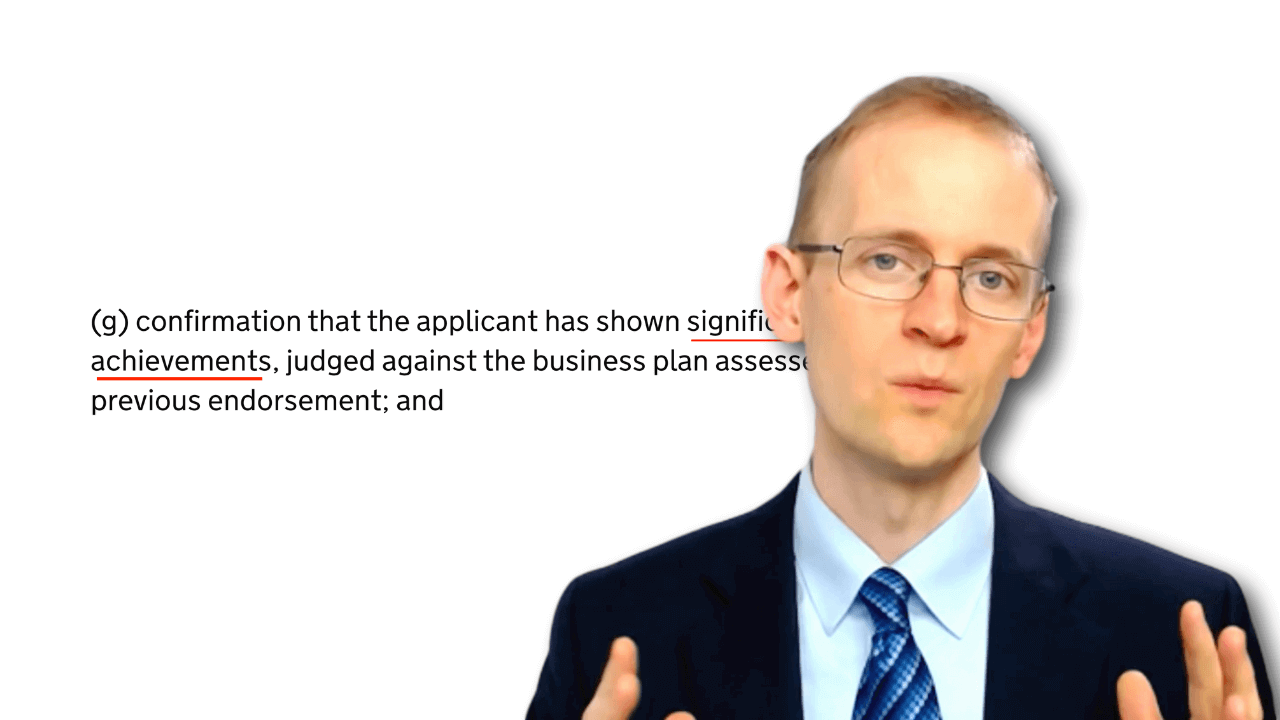In this video, I give 9 tips when you are applying for ILR under the innovator visa.
Some of the key points are:
- You should generally look to apply 28 days before you accrue the 3 years, and then order the Priority or better still the Super Priority service, so that you can get a decision on your application before your initial visa expires. That way that is still time during which you can make an innovator extension application, if your ILR application is refused due to a technicality (bearing in mind that this is still a young visa route and there have not been many ILR applications – I am doing some of the first). On other visa routes like the Student visa and Tier 2 visa (now Skilled Worker visa) historically a buffer period has been granted at the end, which facilitates ease of extension after the qualifying period, but this is not the case with the innovator visa. Now it may be that the Home Office decides to vary your innovator settlement application to an innovator extension application (if they are not satisfied that the optional criteria are met). The application references this (as you can see in this screenshot from the ILR innovator form), but best to play it safe with the timing.
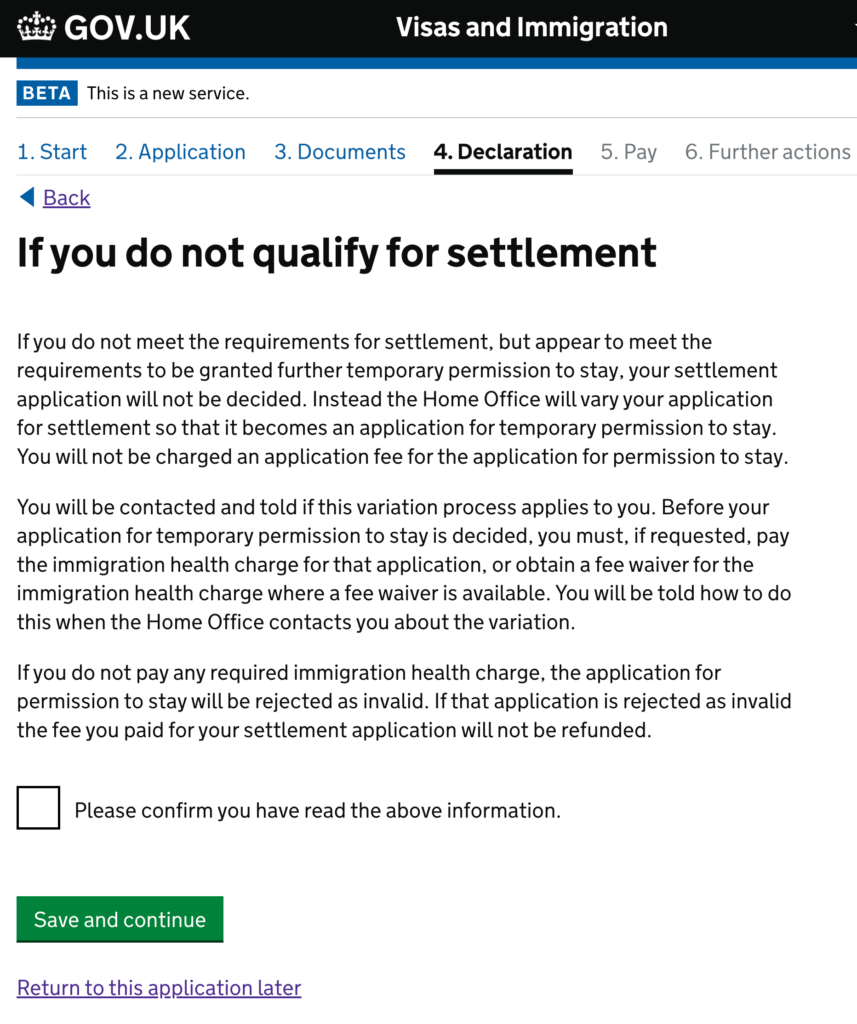
- Check the deliverables or milestones in your business plan. You will hopefully have set out your deliverables in your initial business plan. You have to, to some extent, in order to fulfil the visa requirement to show structured planning. But people who I have not worked with before show me business plans in which there are either no deliverables, or no verifiable deliverables. Leaving aside the optional success criteria, you will always need to show that you have made significant achievements judged against the business plan which was originally assessed (this is a screenshot of the rule). So if your business plan does not contain verifiable deliverables, then this needs to be looked at before you apply. Your ILR endorsement letter needs to be defensible in this respect.

- If you can apply now, pre-October 2022, then you can get endorsed by your existing endorsing body. But if you leave it until later, the government is currently re-tendering for the endorsing bodies, and the current very long list is likely to be cut down to three or so endorsing bodies. So whilst you can potentially rely on your reviews or recommendations from your existing body, to make apply for endorsement from one of the new endorsing bodies, it may be more optimal to be endorsed by the body with which you are already working. So timing is a factor there. With one of my clients we are applying very early, so that the endorsement letter (which lasts for 3 months), is issued just in time, to allow endorsement by the current endorser, where the letter will expire just after the commencement of the 28 day period. In some cases the timing will have to be carefully planned. In others, it may be more straightforward.
- These are the published details of the tender (you can pause the video if you want to read from these two screenshots).
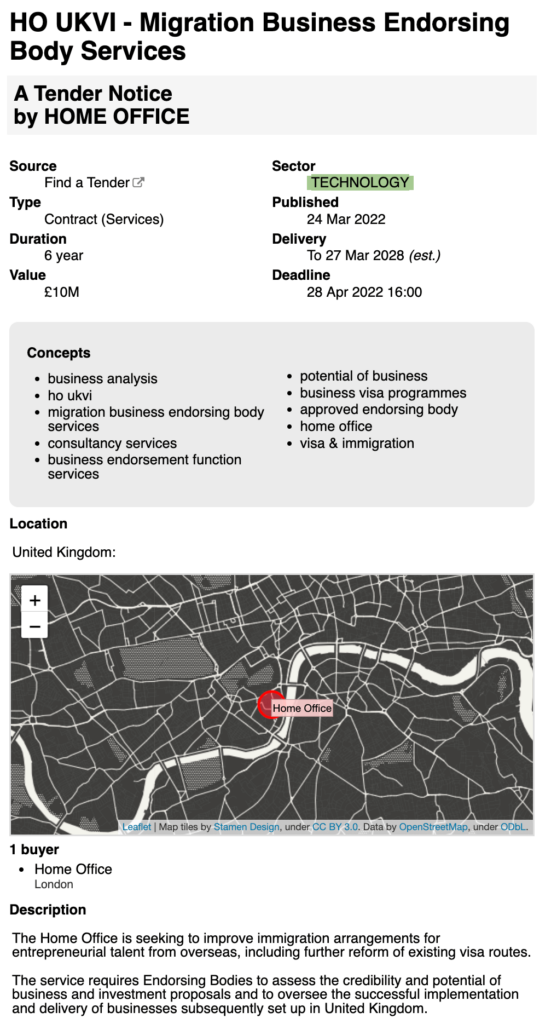
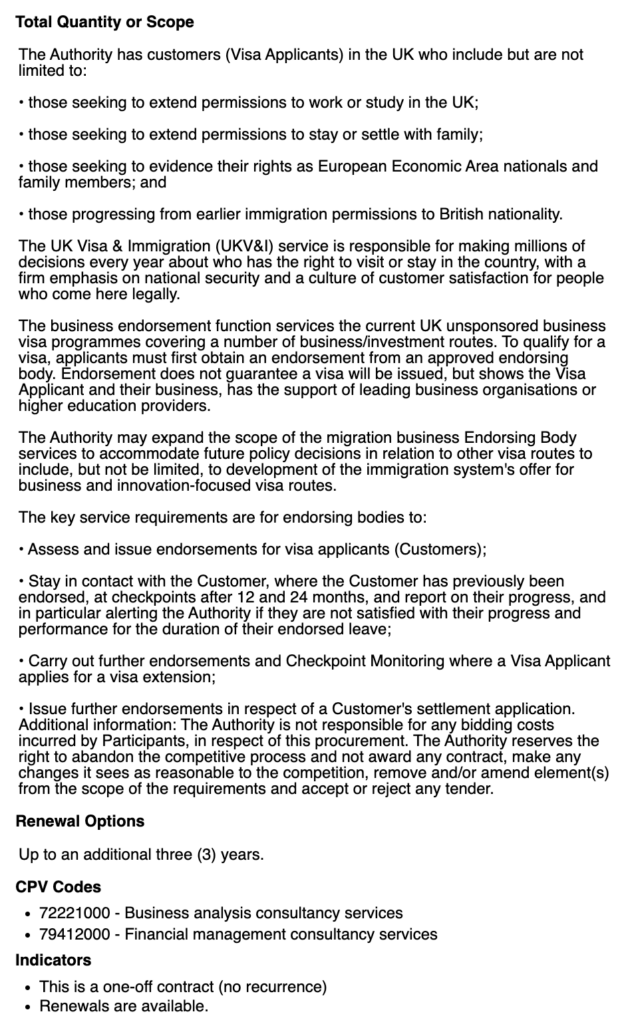
- A quick additional point on timing: dependent on how your innovator business has performed (and which success criteria you are relying on), you should be looking to start preparing your innovator ILR application as soon as your 18 month review has concluded.
- Do not forget that you need to show that the business is sustainable for at least a further 12 months (as shown in this screenshot from the innovator ILR application), based on its assets and expected income, weighed against its current and planned expenses. Best to have some underlying accountancy evidence to corroborate this.
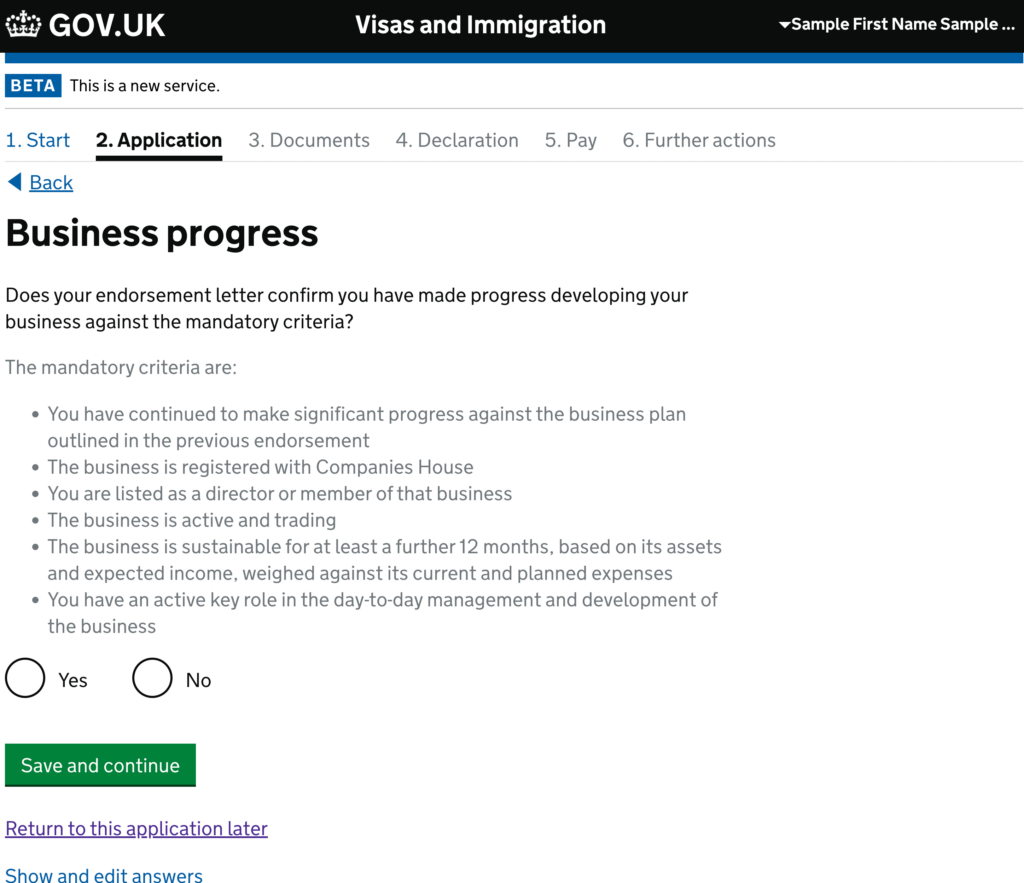
- Some of my clients have fulfilled the £1m+ success criterion, and others the £500k export success criterion. But others, particularly those relying on R&D, will need to be carefully advised. I have heard some questionable recommendations circulating in this regard, so take your own Counsel.
- Select your success criteria carefully (as shown in this screenshot from the ILR application). If you are relying on the ‘£50,000 invested’ criterion, then typically you would show at least that sum going into the company as working capital and then have a collection of the invoices to evidence linkage with the deliverables in the business plan.
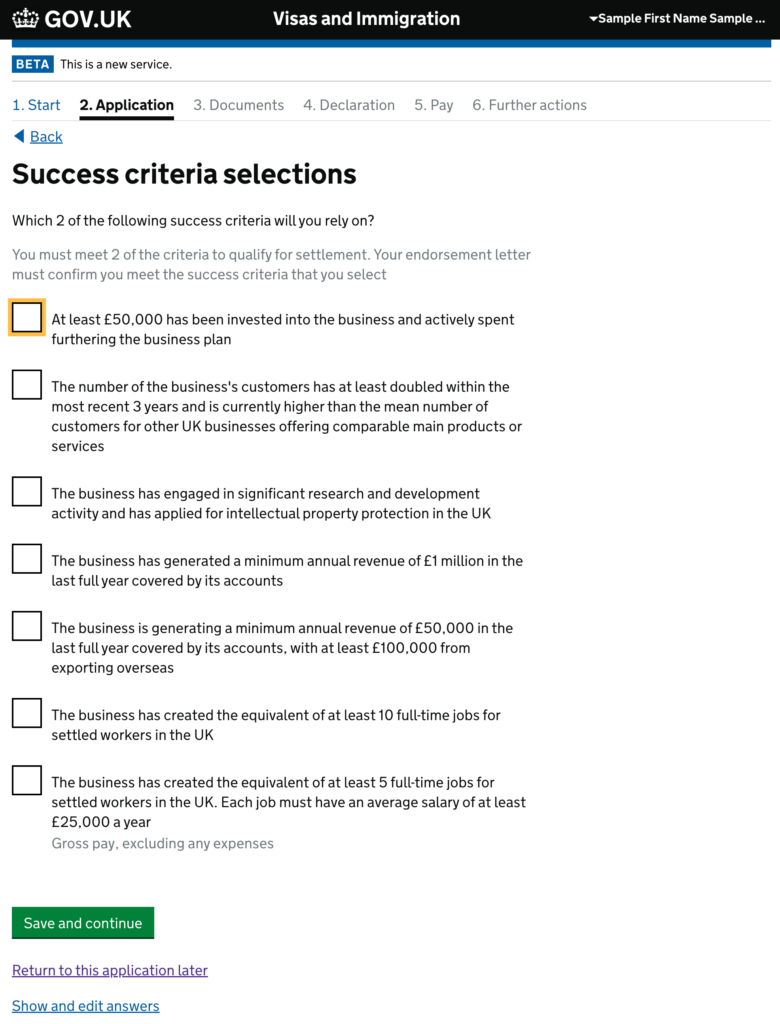
- Bear in mind the evidence package that is being submitted to the Home Office. So it’s not just about the endorsing body. If they give the sign off, you still may be asked for the underlying evidence when the Home Office receives the application (in the same way that they independently assess your business plan when you submit your initial application). Plus bear in mind that the Home Office will not necessary regard all endorsing bodies as equals.
- You should get the other aspects of the application process out of the way, such as taking the Life in the UK test. You can check out my series on that separately, to prepare for the test.

